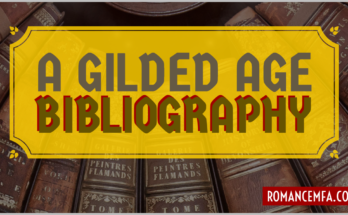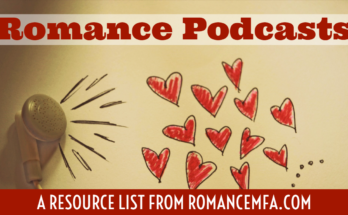Historical Romance Research Reading is a semi-regular roundup of historical information for authors and readers who want a deeper understanding of the context for their historical romances. Got a hot tip? Send it in or give a shoutout on twitter to @RomMFA.
Georgian era divorce
Anna Harrington writes on Heroes and Heartbreakers: How hard was it to get divorced?
In our current 21st century society, we take getting a divorce for granted. Some estimates place divorce rates as high as 50%, and “no-fault” divorces are relatively quick, easy, and cheap to secure. While researching this, I came across a website that promised me that I could get a no fault divorce in Just 3 Easy Steps! And FOR ONLY $299!! (If I had a husband, I would suspect that author research like this might make him a bit nervous.)
Because of this, we often forget exactly how extremely difficult it once was to end a marriage. Even a tragically bad and cruel one. And so, divorce (and annulment, especially for failure to consummate the marriage) finds its way into many historical romances as a convenient plot device.
In the real Georgian period, however, divorce was almost never granted, always scandalous, and usually a brutal and humiliating experience for both parties, who had to publicly disclose their evidence, no matter how salacious or degrading.
Read more at Heroes and Heartbreakers, visit Anna Harrington at www.AnnaHarringtonBooks.com or follow her at @aharrington2875.
Regency versus Victorian
Also on Heroes and Heartbreakers, Anna C Bowling lays out some of the telltale differences between Regency and Victorian eras.
If anybody, especially older characters refer to a person from, let’s say, New York, or Maryland or Georgia, as a “Colonial,” the book is probably a Regency since the American Revolution was not that long ago, all things considered (and there is the whole War of 1812 thing to consider). Tensions may still be a little high. If, on the other hand, we’re talking about “Americans,” it’s more likely that we are in a Victorian. If the Americans have marriageable daughters with a lot of money, and want to marry Englishmen with old titles, grand estates and empty-ish pockets, then the book is almost certainly a Victorian.
Read more at Heroes and Heartbreakers, visit Anna C Bowling’s blog Typing with Wet Nails or follow her @unzadi.
Historical Travel Guides
The Happily Ever After column in USA Today ran an interview with Sonja Rouillard, author of the ‘Romance Readers Guide to Historic London’.
Almack’s. White’s. Bedlam. Hatchards.
If you’re a historical romance fan, you’ve read these terms, maybe already know quite a bit about them, but what were they really? How did they come about? It turns out their backstories are often fantastical and dramatic, proving the old adage that “sometimes truth is stranger than fiction.” For the budding novelist, these histories are a gold mine of unusual story ideas or plot twists. And for the fan, the Romance Readers Guide to Historic London shows you their location on period maps, if they’re still around, and, when possible, how to get your foot inside the door if they’re closed to the public.
Read more from USA Today, visit www.romancereadersguides.com or follow @RomGuides on Twitter.
After perusing London, take a visit to Georgian Bath with Clare Alexander on the Historical Hussies blog.
Ah, Bath! The lovely city in Somerset on the banks of the Avon is the only city in England to be designated a UNESCO World Heritage Site. The city holds everything from pagan foundations, through Roman baths, medieval churches, graceful Georgian buildings, Victorian monuments, to modern shops, hotels, restaurants, and pubs.
Read more, and see photos, at Historical Hussies, or visit Clare Alexander’s website at www.clarealexanderwrites.com.
Finally, take a trip through the rest of Georgian England: here’s a Dear Author review of Monica Hall’s ‘A Visitor’s Guide to Georgian England’
I adore me some Georgian era books and am always interested in learning more about what life was really like then. Some facts are fascinating, some are horrifying and in all honesty I’m usually happy to close a book and realize I’m still safe at home in the modern world.
Georgian Water: Swimming, Drowning, Drinking, & Diseases…
For a more specific, yet universal, topic, Monica Hall also wrote a guest post on water in Georgian England at the blog A Covent Garden Gilflurt’s Guide to Life
Deep water in wells, ponds, rivers and mill-races was a particular hazard as very few people could swim. Water was for work, not recreation, so the opportunities for learning to swim were rather limited. People fell into their own wells, lost their footing when getting in and out of flimsy ferries, got swept away in tidal rivers, or trapped in quicksands and mud when trying to fish or empty eel traps, or simply trying to get clean. Very often their cloth
ing bogged them down. Poor women often did the laundry in rivers and if they fell in, due to pregnancy or advancing age, their long and bulky cotton and woollen clothes absorbed huge amounts of water leaving them unable to climb muddy and slippery banks to save themselves. You could drown in quite shallow waters. Another hazard among the young particularly was skating on frozen ponds and falling through the ice.
Read more at A Covent Garden Gilflurt’s Guide to Life.
‘Watering pots’ and other artifacts of Regency life
And on the topic of water, how about ‘watering pots’? Elizabeth Hawksley writes about what those weepy historical heroines are actually being compared with on the Historical and Regency Romance UK blog.
I’d always assumed that a watering-pot was a Regency synonym for a watering-can – until last Friday, when I visited the newly-opened Garden Museum in Lambeth and, to my amazement, they actually had an early 19th century watering-pot.
Read more, and see pictures at the Historical and Regency Romance UK blog or visit Elizabeth Hawksley’s website at elizabethhawksley.com.
For costume research, head over to tumblr and peruse the prolific posts on weloveperioddrama.tumblr.com for gif clips from movies and shows. Check the tags for time period and source info.
Finally, here’s an old post on Dear Author showcasing regency artifacts:
The find by Jo Beverly of the Almack’s Voucher on Flickr sent me searching out other photographic evidence of the Regency period. There was something so visceral about the Almack’s voucher and I know having seen it, the image will now reverberate in my memory each time I read a regency. I decided to post a collection of images to make the motion picture in my head more fulsome.
That’s all for this time. Follow the Romance MFA on twitter @RomMFA for more links as I find them.



